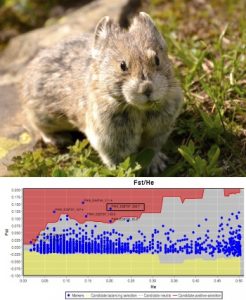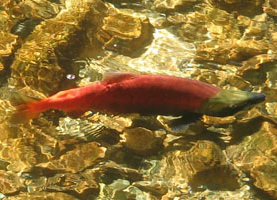Biologists have long appreciated the importance of preserving the ability of organisms to adapt to changing environments, yet have been limited in their capacity to quantify and use adaptive genetic variation for prioritizing populations for management. Until recently, our ability to directly investigate adaptive genetic variation has been limited to a handful of model organisms studied under artificial conditions. Population genomics combines genomic technologies with population genetics theory to provide a framework for detecting genome-wide associations between segregating variation and fitness-related traits in natural populations. This approach seeks to identify loci that exhibit signatures of selection in comparative genomic scans of populations exhibiting varying phenotypes.
organisms to adapt to changing environments, yet have been limited in their capacity to quantify and use adaptive genetic variation for prioritizing populations for management. Until recently, our ability to directly investigate adaptive genetic variation has been limited to a handful of model organisms studied under artificial conditions. Population genomics combines genomic technologies with population genetics theory to provide a framework for detecting genome-wide associations between segregating variation and fitness-related traits in natural populations. This approach seeks to identify loci that exhibit signatures of selection in comparative genomic scans of populations exhibiting varying phenotypes.
Candidate loci are identified as those that show “outlier” behavior, exhibiting very high or low divergence relative to levels found at a large set of markers compared within and between populations.
 Our research entails some of the first applications of population genomics to the study of adaptive divergence within systems of conservation significance, particularly kokanee salmon and American pika. Using a variety of approaches including RNAseq and RADseq, this work has provided basic insights into life-history evolution and the genetic basis of adaptation within natural populations at multiple spatial scales (local, regional and landscape), and demonstrated applications to fisheries management, species at risk protection, and the biotic impacts of rapid climate change.
Our research entails some of the first applications of population genomics to the study of adaptive divergence within systems of conservation significance, particularly kokanee salmon and American pika. Using a variety of approaches including RNAseq and RADseq, this work has provided basic insights into life-history evolution and the genetic basis of adaptation within natural populations at multiple spatial scales (local, regional and landscape), and demonstrated applications to fisheries management, species at risk protection, and the biotic impacts of rapid climate change.

 Follow
Follow